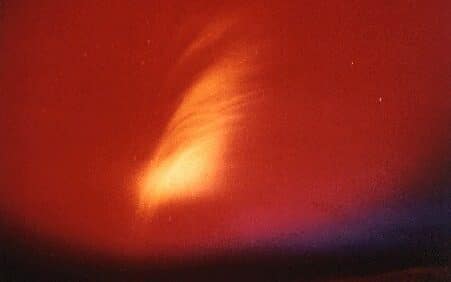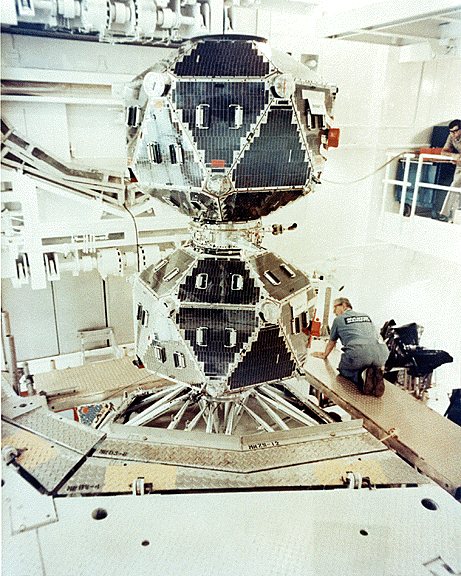Project Vela had a big act to follow. The Manhattan Project gave one population of humanity a nuclear weapon, the power of which inconceivable up to that point in history, outside of the realm of theoretics.
Power is intoxicating and attractive, in the many forms it comes in throughout the natural world. It equates to survival, to victory, and to the preservation of individuals, groups, and civilizations. And so of course, one population possessing a nuclear weapon means one population holds power over any nation that does not.
Nuclear proliferation solved that global predicament, with the development and research of nuclear weapons and power plants erupting on an international scale. “Mutually assured destruction”, a morpid concept, entered the lexicon of the defense sector. The power of the atom harnessed means the exploitation of a miniscule particle resulting in the alteration of geopolitical strategies for arguably the remainder of human existence, or, until Skynet becomes a reality.
The United States was of course the pioneer of that trail, but its adversary the Soviet Union quickly followed their lead at the end of WWII, eventually leading to the long-lasting Cold War.
The Test Ban Treaty

Fast forward to 1963: nuclear weapons development was advancing, and remote corners of the world felt the fury of nuclear detonations.
Now famous hydrogen bomb tests, such as the US led project “Starfish Prime”, detonated over the ocean. These tests had some unfortunate secondhand results, particularly from the misjudged yields of radiation emitted from the detonations, including radiation sickness in sailors and disrupted communications in nearby areas.
The Test Ban Treaty of 1963 was a multi-lateral effort to begin curbing the newly discovered dangers of unregulated nuclear testing. Great Britain, Northern Ireland, the United States of America, and the Union of Soviet Socialist Republics were the original signing parties for the treaty, followed later by others. According to the US Department of State:
“The Test Ban Treaty of 1963 prohibits nuclear weapons tests “or any other nuclear explosion” in the atmosphere, in outer space, and underwater. While not banning tests underground, the Treaty does prohibit nuclear explosions in this environment if they cause “radioactive debris to be present outside the territorial limits of the State under whose jurisdiction or control” the explosions were conducted. In accepting limitations on testing, the nuclear powers accepted as a common goal “an end to the contamination of man’s environment by radioactive substances.”
A simple honour system was not enough for the enforcement of the treaty, and new technology in the field of nuclear detection was required to monitor obedience within participating nations.
Project Vela

In classic Cold War era fashion, the Defense Advanced Research Projects Agency (DARPA) was tasked to develop monitoring technology by the US Department of Defense, and thus came Project Vela.
Satellites with nuclear detection capabilities (Vela satellites) were the central focus of DARPA’s research, with the first pair being sent into orbit in October of 1963. According to the Los Alamos National Laboratory, the location of primary development:
“During the 50 years since the first Vela satellites, the United States developed and maintained an evolving constellation of operationally vigilant, space-based sentinels for nuclear detonation treaty verification. A multitude of sophisticated sensors developed at Los Alamos and Sandia National Laboratories, each evolving and benefitting from continual advances in electronics and sensor technologies, monitors for electromagnetic and energetic particle emissions associated with aboveground detonations.”
A key idea to keep in mind is the concept of gamma-ray detection. According to NASA, “Gamma rays have the smallest wavelengths and the most energy of any wave in the electromagnetic spectrum. They are produced by the hottest and most energetic objects in the universe, such as neutron stars and pulsars, supernova explosions, and regions around black holes. On Earth, gamma waves are generated by nuclear explosions, lightning, and the less dramatic activity of radioactive decay.”
This sort of detection was central to the Vela Projects mission, since a nuclear weapon detonation would unavoidably produce gamma-rays.
The satellites detected many, there was one “incident” that has left scientists and defense employees puzzled.
Project Vela: “The Incident”
16 years after the launch of the first Vela satellites, something strange happened. On the 22nd of September 1979, one satellite detected a double flash optic signal in a remote part of the Indian Ocean. As per protocol, the US government needs answers. If it were indeed a nuclear test, that would mean a nation violated the treaty, which would be highly problematic.
According to The Wilson Center, “Initially, the signal indicated a low-yield nuclear explosion in the far South Atlantic, possibly by South Africa or Israel or both. Later, however, a high-level White House scientific panel, chaired by MIT electrical engineering professor Jack Ruina, concluded that the signal was more probably the result of a non-nuclear unexplained “zoo” event (e.g., a striking meteoroid) on or around the satellite.”
The investigation did not end there, any various agencies, including the CIA, challenged the notion that it was a natural event, and further raised suspicion of a secret nuclear test. But that begs the question, as to who did it?
One Bomb, Two Suspects
The US had probable reason to believe the test was completed by either South Africa, Israel, or both.
South Africa was an apartheid regime at the time of the Vela incident, and consequently was under much scorn on the world stage. They had a known nuclear weapons program but were subsequently a party within the treaty. To complicate it more, later investigations into the nation’s nuclear program determined that it was unlikely they had a functioning nuclear weapon at the time of the incident.
A now declassified CIA report on the Project Vela incident had a particular focus on the involvement of South African Prime Minister Willem Botha, and the possible motives that would lead him to order a test. Botha had worked in the prior decades towards the development of South Africa’s defense capabilities, with an emphasis on self-self-sufficiency in lieu of being politically isolated due his nations apartheid policies. According to the report:
“Because of his (Botha) personal convictions as well as his official responsibilities, he has advocated more than any other Cabinet officer the military components of South Africa’s strategy for coping with possible external threats. He has regarded the West as unwilling to support South Africa against foreign threats that he has perceived to be growing. He has probably sympathized with views that nuclear weapons might ultimately be needed. However, he probably has not foreseen any imminent military requirement for nuclear weapons or any political advantages to disclosing particular elements of South Africa’s nuclear weapons capabilities at this time.”
Contrary to South Africa, Israel’s nuclear weapons program technically didn’t exist, nor was it denied. According to the aforementioned CIA report, it was highly unlikely Israel would have been the sole conductor of a test, specifically citing the “inevitable security risks” that would have come as a repercussion, as well as a strong geopolitical reaction. “Israel may well have had requirements to test that have been in conflict with its basic policy of avoiding any overt demonstration of a nuclear capability. We (the CIA) believe this policy has been very important to Israel, and we doubt that its incentives to test would have been sufficient to overcome its disincentives as long as the leadership perceived any substantial probability of unambiguous attribution to Israel.”
The final theory, which is also the most plausible based on the known reporting, is that something involved jointly both South Africa and Israel in a nuclear weapons test. For one, Israel was known to be friendly with South Africa during this time, and broke ranks with most of the geopolitical powers who condemned the apartheid regime. Both nations shared similarities in their isolation on the world stage, and desire for self-sufficiency, including by becoming a nuclear power.
Since South Africa and Israel were allies at the time of the Vela incident, there is merit to the idea of South Africa providing Israel both naval transportation to the Indian Ocean, and ample space to conduct a test within the sphere of South African territory. As per the CIA report, “Israelis have not only participated in certain South African nuclear research activities over the last few years, but they have also offered the transferred various sorts of advanced non-nuclear weapons technology to South Africa. SO clandestine arrangements between South Africa and Israel for joint testing operations might have been negotiable.”
An Ongoing Debate
Varying perspectives on the Vela Incident have continued to this day. Even though there were plausible reasons to believe Israel, South Africa, or both are involved, there are also counterarguments making the claim that it was a natural event.
In a later published journal, President Jimmy Carter, whose administration was active during the time of the incident, admitted that he believed it was indeed a nuclear test, and that Israel was an involved actor. That claim broke away from a White House driven panel’s claims after the incident, where subject matter experts published a report alluding to the natural occurrence theory. Following that panel, “classified memo by a senior official at the Defense Intelligence Agency (DIA) from June 1980 dubbed that the White House panel’s report a ‘whitewash, due to political considerations, ‘and argued the flash resulted from a nuclear test.”
Of course, “draw your own conclusions” is a suitable response to this incident, but it’s hard to see through the evidence and not follow the bread crumb trail leading to nuclear testing. For the sake of truth, the world may never know.

